By Keith Testa - Apr 14, 2015 | 0 comments
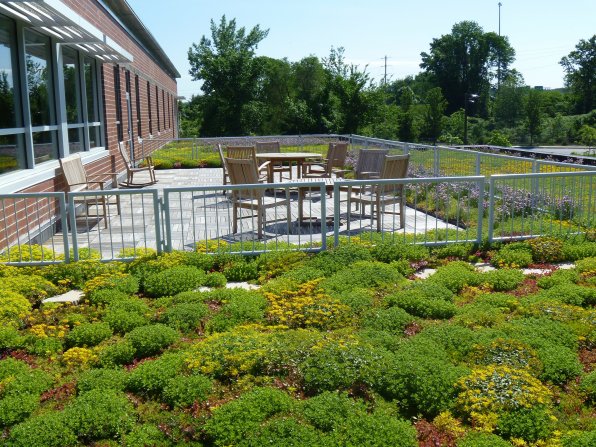
<strong>Weston Solutions</strong></p><p>There’s going green, and there’s really going green – as in growing a bunch of green stuff on your roof, like they do over at Weston Solutions on Constitution Avenue. The “vegetated green roof system” utilizes recycled plastic and features climate-appropriate plants (our climate: WINTER HELLSCAPE FOREVER). According to the Weston website, the system “allows a normally impervious roof to absorb rainfall and reduce stormwater discharge. It also lowers the roof top temperature in the summer, reducing cooling costs and extending roof life.” The spot is accessible from the second story of the building (photo at right, courtesy of Weston Solutions). So this place could conceivably hire roof gardeners? What is this, the future?
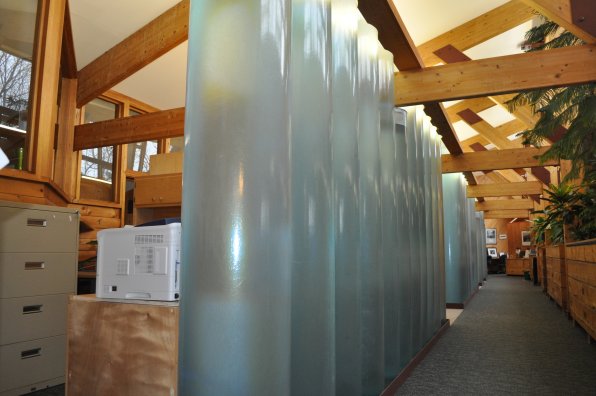
<strong>The Society for the Protection of New Hampshire Forests</strong></p><p>This place might as well be called the Society For Efficiency Efficientness. It’s everywhere! The initial wing, built in 1980, features water tubes (photo below) that collect sunlight and store heat that is released as the room cools to lessen the reliance on the building’s heating system.
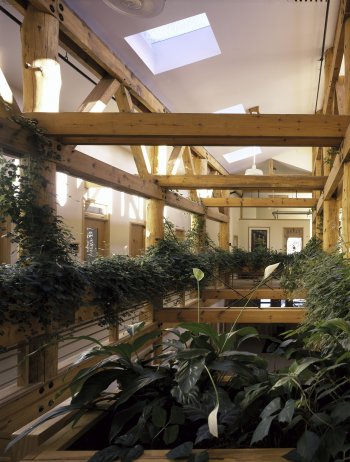
<strong>The Society for the Protection of New Hampshire Forests</strong></p><p>The French Wing, built in 2000, was the first Gold Level LEED certified building in New England, and for good reason – water from the sinks and shower is collected in a tank that cycles it back through small pipes to the plants hanging in the wing. The runoff from THAT water is then collected in another tank and routed outside to water flower beds. That’s three uses for every gallon of water! Plus, the entire wing uses only about 22 to 25 gallons per day, or roughly one per employee in the location.
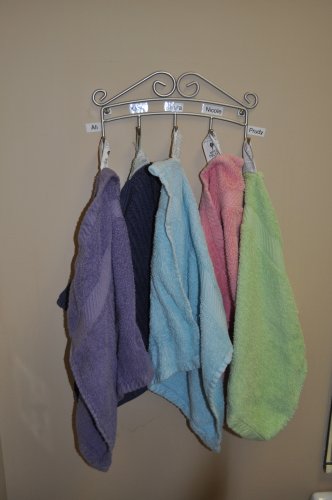
<strong>The Jordan Institute and Resilient Buildings Group</strong></p><p>Being mindful of efficiency can also save you some cash sometimes, as the organizations found out in the bathroom, where paper towels were eschewed in favor of hand towels, organized quaintly on racks under employees’ names (photo at far right). Richardson said the company saves a ton by not having to purchase paper towels, and she takes the towels home at the end of the week to launder them. That’s the legal kind of laundering in a business setting, by the way.
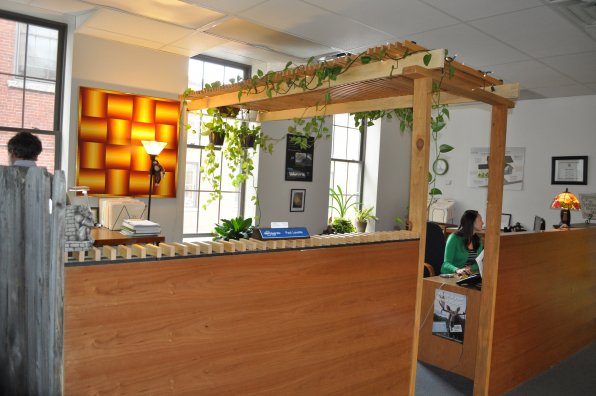
<strong>The Jordan Institute and Resilient Buildings Group</strong></p><p>The Jordan Institute and Resilient Buildings Group moved to their new location on Dixon Avenue less than two years ago and immediately added some of their signature efficient touches. To create separation between the workspace and a hallway for people traffic, Resilient Building Group staffers Paul Leveille and Alison Keay – both of whom have architecture backgrounds – built a cubicle-type setting out of repurposed wood, complete with hanging greenery. None of the wood pieces are affixed to the building, so no structural changes needed to be made, and it all blends together to create a peaceful environment. They also each have a standing desk in their workspace, as does executive director of the Jordan Institute, Laura Richardson.
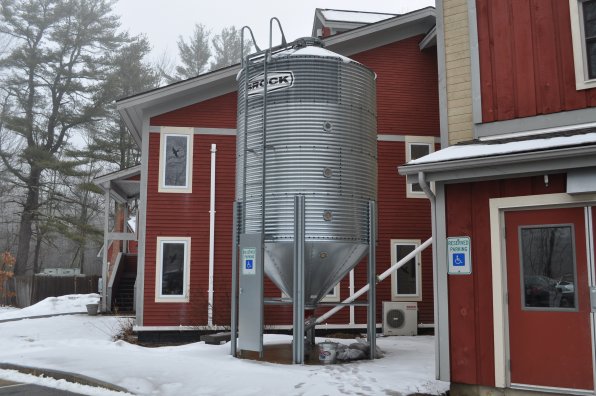
<strong>N.H. Audubon's McLane Center</strong></p><p>The facility is heated by wood chips, stored in an outdoor silo (photo below right). And that’s not all – wastewater from the sinks and a dishwasher in the basement are combined with gray water from the restrooms and are pumped outside to a wildflower garden. The elevators are lubricated with canola oil instead of petroleum-based oil, and some of the insulation was made from recycled newsprint. So there could be Insiders in those walls! The building is designed to use 90 percent less water than a traditional building.
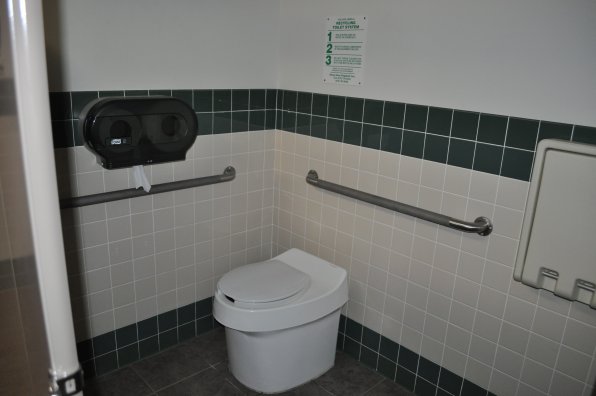
<strong>N.H. Audubon's McLane Center</strong></p><p>The building features composting toilets (photo in the center below) that separate waste into solids and liquids and uses the liquid – which contains nitrates valuable to plant growth – to help fertilize.
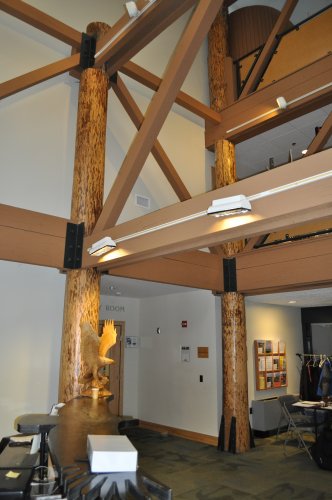
<strong>N.H. Audubon's McLane Center</strong></p><p>The McLane Center added a 12,000-square foot addition that is a Gold Level LEED certified building, with a ton of cool energy efficient touches. The posts used in the building’s lobby are from white pines that were cut down to make space for the parking lot, and Audubon employees stripped the bark (they are also protected by water-based, low-emission polyurethane).
Efficiency abounds in our fair city, and we learned about some of the coolest components of local buildings








